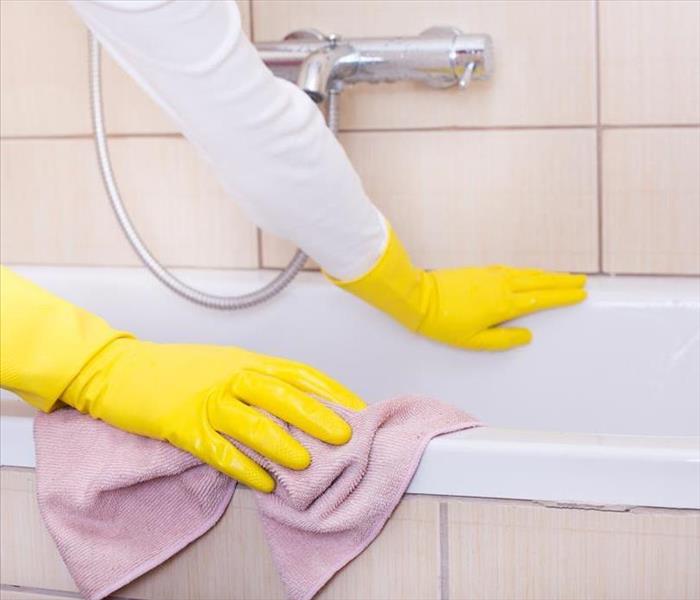Cleaning vs Disinfecting: What's the Difference and Why Does It Matter?
3/10/2021 (Permalink)
The focus on cleaning and disinfecting spaces and things has likely never been such a focus before. The COVID-19 pandemic brought increased attention to cleaning and disinfecting everything, from our hands and clothes to our groceries to our shared items, like grocery store carts, credit card keypads, and gym equipment.
The words clean and disinfect (and often sanitize) are often used synonymously, but they are actually different things with different processes and standards. Want to learn more about cleaning vs. disinfecting? Read on for the differences and how you perform each one.
What Is Cleaning?
Cleaning is what you do when you clean your house. You vacuum, dust, wipe mirrors and surfaces, scrub your bathrooms, and mop your floors. It's the process of removing dirt, crumbs, dust, and germs from the surfaces of your homes. Cleaning typically uses water and cleaners such as glass cleaner, dusting spray, or bathroom cleaner.
While it removes germs, cleaning does not kill germs or bacteria on the surfaces in your home. Cleaning is necessary to remove germs or reduce them in your home, as it lowers the risk of becoming infected by the germs.
What Is Disinfecting?
Disinfecting is the process of actually killing the germs on your home's surfaces. Disinfecting uses chemicals (disinfectants) to kill germs. Common ones include bleach or alcohol. Disinfecting isn't meant to clean your surface; rather, you should clean first and then disinfect.
You should follow the directions on the product to make sure it is effective. Many disinfectants need to be left on a surface for a certain period of time in order to kill the germs. There are also guidelines for storing products, such as bleach, to ensure that the product does not lose its effectiveness.
For example, bleach mixed with water begins to lose its effectiveness after 24 hours, so you should make a new batch of bleach and water solution each day you are going to disinfect.
Cleaning vs. Disinfecting: Which Do You Need?
Rather than thinking of cleaning and disinfecting as one or the other, they need to be used together. First, you need to clean your surface to remove dirt, debris, and germs. Disinfectants aren't meant to clean (and cleaners are meant to disinfect), so you need to have a clean surface before you can disinfect.
Once the surface is clean, you can use your disinfect to kill any germs that were not removed during the cleaning process. High-touch areas in your home that should be regularly cleaned and disinfected include:
- Doorknobs
- Light switches
- Faucet handles
- Cupboard and drawer handles
- Countertops
- TV remotes
- Electronic devices
- Computer keyboards and mice (especially if they are shared)
- Telephone handsets and buttons
These are high traffic areas touched multiple times per day by the people in your household, so they are prime locations for germs to thrive and pass from person to person.
Keep Your Space Safe
Don't think of cleaning vs. disinfecting as a competition. Instead, think of it as two processes to be used together to keep your home germ-free and your family healthy. Do your research and make sure you are cleaning and disinfecting properly.
Here at SERVPRO, we can help you ensure your home or business is clean and disinfected after a natural disaster, fire, water damage, or even mold. Contact us today to learn how we can help you.






 24/7 Emergency Service
24/7 Emergency Service